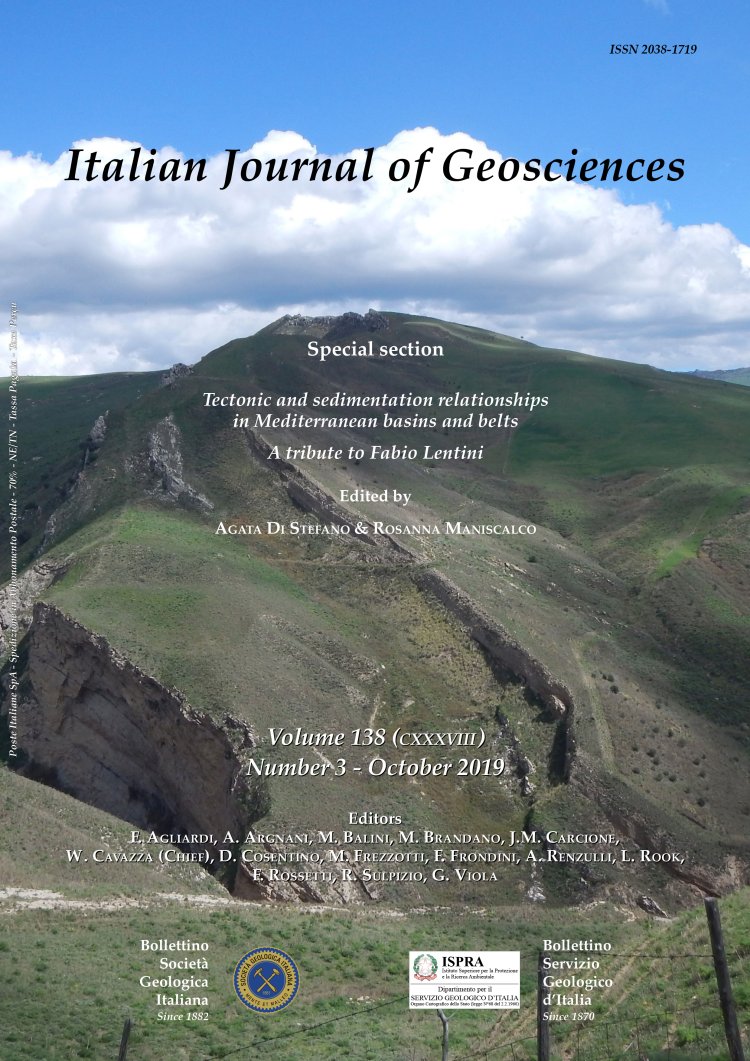
Unconformities, neptunian dykes and mass-transport deposits as an evidence for Early Cretaceous syn-sedimentary tectonics: new insights from the Central Apennines
Angelo Cipriani (1) & Cinzia Bottini (2)
(1) Dipartimento di Scienze della Terra, "Sapienza" Università di Roma. Piazzale Aldo Moro 5, 00185, Roma - Italia
(2) Dipartimento di Scienze della Terra "Ardito Desio", Università di Milano. Via Mangiagalli 34, 20133 Milano - Italia. Corresponding author e-mail: angelo.cipriani@uniroma1.it
Volume: 138 (2019) f.3
Pages: 333-354
Abstract
This work presents the results of a geological mapping project performed on the Narni-Amelia Ridge (Central Apennines, Italy). Fieldwork was aimed at defining the rift and post-rift architecture of the Jurassic to Cretaceous part of the Umbria-Marche-Sabina basin succession, which is characterised by Jurassic rift-related pelagic carbonate platform (PCP)/basin systems. While the effects of the Early Jurassic rifting are well documented in the regional literature, a phase of post-rift extensional tectonics in the late Early Cretaceous is a relatively under-investigated subject. This normal faulting was apparently widespread at a super-regional scale, and the Narni- Amelia Ridge carries direct and indirect evidence for this episode of revived deformation:
(i) the occurrence of limestone megabreccias ("Mt. Cosce Breccia") resting unconformably, through an erosional surface, on a Jurassic (and Cretaceous) horst-block. Stepped unconformities are associated with "spur and groove" geometries of the escarpment, suggesting topographic backstepping due to rock- fall processes;
(ii) millimetre to decametre-scale neptunian dykes and sills made of "Mt. Cosce Breccia" and of Maiolica pelagites. These fractures cut the footwall-block of Cretaceous faults, made of Calcare Massiccio Fm (Hettangian), sub-orthogonal to its master- bedding. Dykes are associated with tension gashes filled with chert (silicification of fracture zones). The steep walls of those neptunian dykes filled with Maiolica-type deposits also exhibit a thin chert band;
(iii) the onlap of Aptian-Albian Marne a Fucoidi Fm on the Hettangian Calcare Massiccio Fm. This is an unicum in the whole Umbria- Marche-Sabina Domain;
(iv) the presence of mass-transport deposits (slumps and debris flows) in the uppermost part of the Maiolica Fm and lower part of the Marne a Fucoidi Fm.
These stratigraphic "anomalies" are collectively interpreted as the products of normal faulting, which caused the retreat of the original Jurassic margins of the PCPs, rejuvenating the submarine palaeotopography. A "middle" Barremian age for this phase of syn- sedimentary extension is indicated by the nannofossil assemblage of Maiolica-type facies sampled from the "Mt. Cosce Breccia" and from the neptunian dykes.
Keywords
Cretaceous extensional faults, syn-sedimentary tectonics, paleoescarpments, neptunian dykes, Umbria- Marche-Sabina Succession, Narni-Amelia Ridge.
Get Full Text